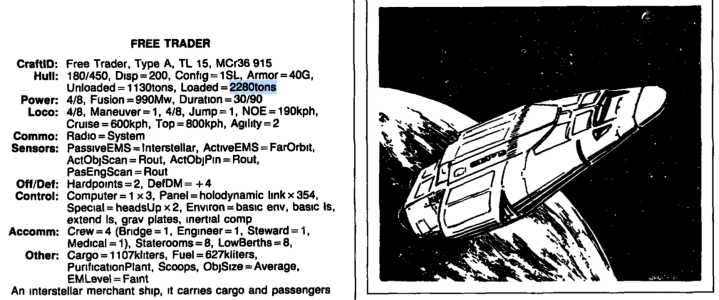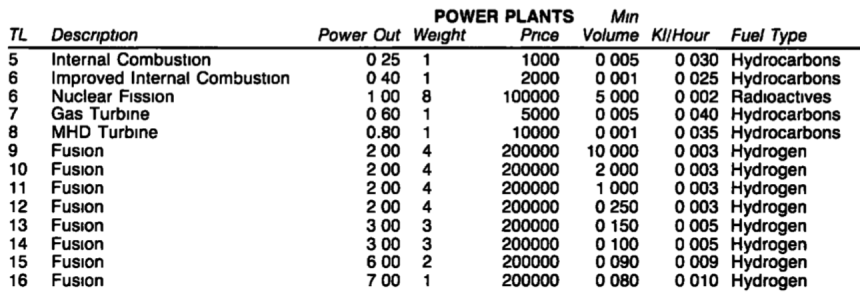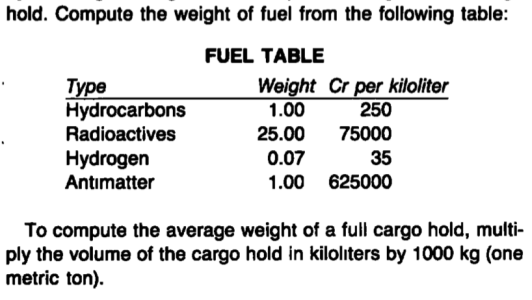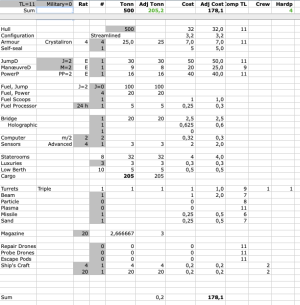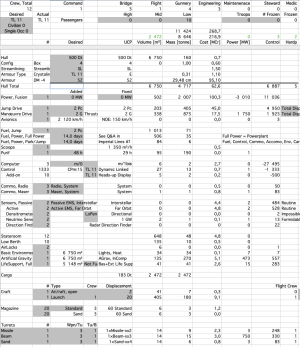AnotherDilbert
SOC-14 1K
I haven't seen MgT1 Supp 6, but at a guess it's highly simplified. If so, don't bother mixing it with reality, just go with the flow...I see that now from your examples. I am sad that I have been using these rules for years and they're so wonky. But changing rulebook sets is expensive, and I've seen CT and when I looked over the shipbuilding rules, I was wildly confused, so I do not expect to be able to convert.
CT and MT are cheap from FarFuture, at $30 for a CD with everything IIRC... Just treat it as a toolbox to take snippets from.

